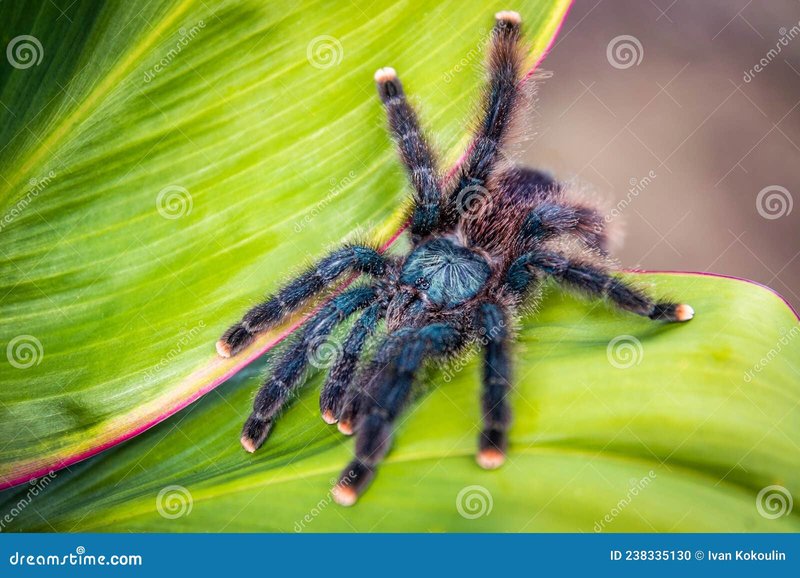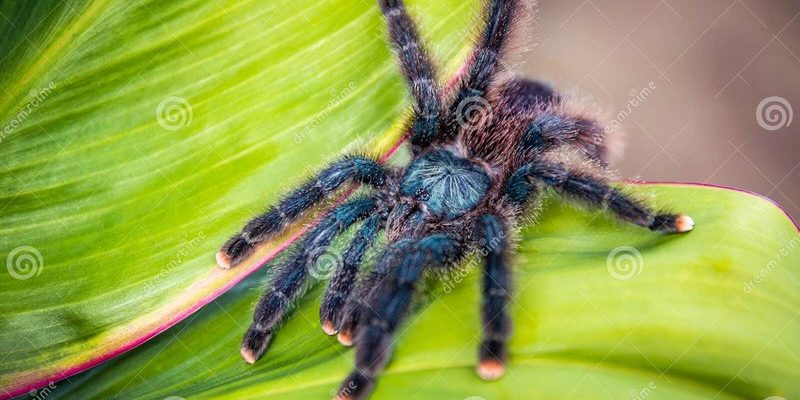
The pink toe tarantula, known scientifically as *Caribena versicolor*, is native to the lush rainforests of the Caribbean. This spider is not just a pretty face; it’s a master of camouflage and a skilled climber. If you’re curious about its habitat and lifestyle, you’re in the right place. Let’s dive into the world of this remarkable arachnid and explore where it lives and thrives.
Natural Habitat of the Pink Toe Tarantula
The pink toe tarantula prefers the warm, humid environment of tropical rainforests. Think of these rainforests as the ultimate playground for spiders: dense foliage, towering trees, and a rich ecosystem. This habitat provides not only the perfect living conditions but also ample hiding spots. The tarantula uses the trees as its home, often building webs high up in the branches.
The lush green canopy above offers excellent protection against predators. By staying off the ground, these spiders can avoid many threats, including birds and larger mammals. Their vibrant colors, particularly the striking pink on their toes, help them blend in with the colorful foliage, adding an extra layer of disguise.
When it comes to temperature, pink toe tarantulas thrive in warm conditions. They prefer environments that stay around 75°F to 85°F, which is another reason they are found in tropical regions. If temperatures drop too much, you might not find them active, as they slow down in cooler conditions.
Geographic Distribution
So, where exactly in the Caribbean can you find these beautiful spiders? Pink toe tarantulas are primarily found in places like Martinique, Guadeloupe, and Dominica. These islands provide the humid climate and rich vegetation they need to thrive.
To give you a clearer picture, here’s a quick list of countries where you can find the pink toe tarantula:
- Martinique
- Guadeloupe
- Dominica
- Puerto Rico
- Other Caribbean Islands
On occasions, you might even spot them in parts of Central America, but their main stomping grounds are in these lush Caribbean locations. The beauty of their habitat is something to behold; it’s a blend of colors and sounds that create a magical atmosphere, perfect for a spider to call home.
Behavior and Lifestyle
The pink toe tarantula is an arboreal species, meaning it loves to live in trees. This isn’t just for show—being up high enables them to hunt and avoid dangers. They are nocturnal hunters, primarily preying on insects and small invertebrates. You might see them descending from their cozy tree homes at night, looking for a meal.
One interesting habit of these tarantulas is their ability to spin silk. They use it to create a sort of hammock where they rest and sleep. So, imagine this spider swinging gently in its silk cocoon, safe and sound high above the forest floor. It’s not just a resting place; it’s also a strategic spot for catching prey that might wander too close.
Despite their fearsome appearance, pink toe tarantulas are relatively docile. Unlike some other tarantula species, they’re not prone to aggressive behavior. However, if threatened, they can certainly defend themselves with a quick bite. But generally speaking, they prefer to retreat rather than engage.
Role in the Ecosystem
You might wonder why these spiders are important in their environments. Well, like all creatures, pink toe tarantulas play a crucial role in maintaining balance in their ecosystems. As predators, they help control the population of insects and other small invertebrates. By keeping these numbers in check, they support the health of their habitat.
Additionally, their existence contributes to the food chain. Birds, snakes, and other animals rely on them as a food source. Without pink toe tarantulas, the entire ecosystem could face disruptions. It’s a reminder of how connected everything is—every creature has its place and purpose.
Conservation Status
Despite their enchanting nature, pink toe tarantulas face challenges in the wild. Habitat destruction, particularly from deforestation and human encroachment, threatens their populations. As rainforests are cut down for agriculture or urban development, these spiders lose their homes.
Conservation efforts are underway in some areas to protect their habitats. Education and awareness about the importance of these ecosystems can lead to better protection practices. When we understand the value of creatures like the pink toe tarantula, we can take steps to ensure they continue to thrive.
Why It Matters to Know Their Habitat
Understanding where the pink toe tarantula is found in the wild not only satisfies curiosity but also helps conservationists work towards protecting their environment. It’s about more than just spiders; it’s about preserving the intricate web of life that exists in tropical rainforests.
Learning about these creatures can inspire efforts to protect their habitats from destruction. You might not become an eco-warrior overnight, but every little bit of knowledge helps raise awareness. Whether it’s advocating for forest protection or simply sharing what you’ve learned, your understanding contributes to the global effort to save these unique habitats.
The pink toe tarantula, with its striking appearance and unique behaviors, is a beloved resident of the Caribbean rainforests. By understanding where it lives and the role it plays in its ecosystem, we can appreciate the delicate balance of nature. These spiders remind us of the beauty and wonder of the natural world and serve as a call to protect their habitats. The next time you hear about pink toe tarantulas, you’ll know they’re not just fascinating creatures; they’re essential parts of the ecosystem that need our help to survive. So let’s keep learning and doing our part for these incredible beings!

